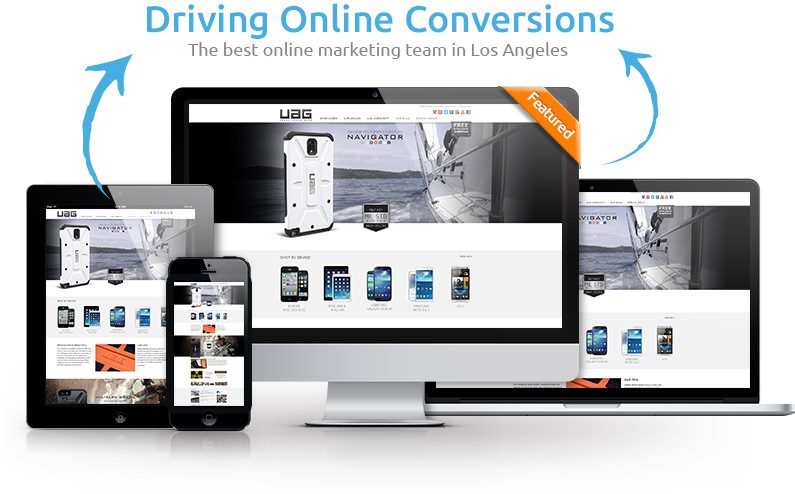
My team and I have worked extensively with every single one of these popular platforms, some for nearly a decade. I’m a Shopify partner, a Bigcommerce partner, a Magento partner, and an industry veteran who has built and optimized online stores on behalf of some of the nation’s leading corporate enterprises. So when it comes to choosing the best e-commerce solution, I have some very definitive opinions, based upon thousands of hours of designing, developing, building, refining, testing and exploring.
No two businesses have exactly the same needs, and your own ideal shopping cart solution will depend on a number of factors, including your budget, your goals, your level of experience, and your existing resources. My team and I can help you to determine your optimal platform, but first we should probably break down the factors that differentiate the various power players. Here is a list of some of the most popular platforms on the market, which I have ranked according to how frequently I recommend them to clients:
- Bigcommerce – my personal favorite
- Shopify – nice themes, but lacking some key features of Bigcommerce
- Magento – best for sites needing heavy customization
- WooCommerce – WordPress plugin, good for very simple stores
- NetSuite SuiteCommerce – too expensive
- VirtueMart – Free Joomla add-on – not as good as WP + WooCommerce
- osCommerce – missing many important features
- Zen Cart – avoid like the plague!
Table of Contents
Bigcommerce
I’m just going to say it right now and on the record (spoiler alert): Bigcommerce is my favorite e-commerce platform in existence today. I recommend it to clients more than any other solution, and I use it for my own online storefronts as well. That’s because Bigcommerce is superior across the board: value, versatility, ease of use, customer support. I grant you that every platform (including Bigcommerce) has its limitations, but when you look at the big picture, this option is simply second to none.
Since 2003, this trailblazing company has been providing top-tier shopping cart solutions at prices that are accessible to businesses of all sizes. In the interest of full disclosure, I must note that my company — Coalition Technologies — is a Bigcommerce partner, but I wouldn’t recommend their services so highly unless I truly believed in them. Afterall, we have partnerships with many leading shopping cart platforms, but only Bigcommerce receives my highest recommendation.
The Pros
- Bigcommerce is the most cost-effective e-commerce solution on the market. With plans starting at $29.95 per month, it’s not the cheapest solution available, but remember that you get what you pay for. No other solution will offer the value that Bigcommerce affords you at this price point: a full website with unlimited product offerings, unlimited bandwidth, unlimited storage, and all of the company’s signature marketing tools. Even Shopify doesn’t offer all of that. If you’re looking to build the ultimate store at a minimal price, Bigcommerce is your only choice. Hands down.
- There are no Bigcommerce transaction fees. As previously noted, transaction fees can really cut into your profits, but Bigcommerce doesn’t charge any transaction fees for customer payments.
- Bigcommerce is — without a doubt — the best platform available when it comes to online marketing. As the CEO of a leading online marketing agency, I pay particular attention to SEO functionality, and Bigcommerce is second to none. All of the themes are designed for maximum search-engine crawlability, because this company simply understands how search engines operate. The sitemaps, the URL structure, and even the internal links are meticulously assembled to accommodate search engine spiders and ensure that every page is poised to be highly competitive for optimal search engine rankings.
- 24/7 support is available for all plans, not just the upper-tier plans. The Bigcommerce team is the most knowledgeable, friendly, and accommodating that I have found of any e-commerce platform.
- There is an extremely user-friendly, built-in blog functionality, which is rare among e-commerce platforms. Hubspot notes that businesses who blog are 13 times more likely to experience a positive ROI, but most shopping cart providers are extremely lacking in this department. They will typically force you to rely on a second-rate blog plug-in or integrate an external WordPress blog. Bigcommerce has made it easier than ever to incorporate your blog into an existing website without any complicated procedures.
The Cons
- Bigcommerce has some of the best looking free themes available, but unfortunately there are a limited number of them, just over a dozen in fact. The good news is that the design gurus at Bigcommerce are continuously introducing new themes to expand your options, but for the time being, you will have to choose from among a fairly limited number of free options, or pay a bit extra for a premium theme. You can also customize the themes yourself.
- There are limits on annual sales (particularly for the cheaper Bigcommerce plans), so please be mindful of that. Standard plans limit you to $50,000 in sales, while Plus plans limit you to $125,000. If you anticipate higher than $125,000 in sales, an Enterprise plan is highly recommended.
The Verdict
When you consider the price, ease of use, third-party app integration, customer support, marketing capabilities, and overall functionality, Bigcommerce is simply in a class by itself. Best of all, it’s ideal for businesses of all sizes. Whether you’re operating as a small mom-and-pop operation or a large corporation, you won’t find a better option. Bigcommerce is as good as it gets.
Rating: 4.9 out of 5.
Shopify
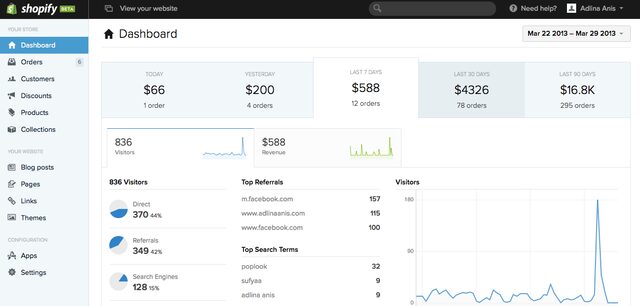
The Pros
- As previously mentioned, it doesn’t get much easier than Shopify. The platform was designed so that even the most novice online business owners can navigate all of their essential day-to-day operations without the need for technical knowhow. Add and delete products and categories, implement coupons and promotions, manage shipments, and interact with customers all at the click of a button.
- The point-of-sale capabilities are a godsend for anyone who operates a brick-and-mortar store in addition to their online operations. Using the POS features, you can manage both online and offline sales with ease, and maintain all of your sales and inventory data in one convenient location. This is truly unique in the world of e-commerce platforms, as most of Shopify’s leading competitors do not offer a feature like this.
- Shopify’s App Store is one of the most robust in the industry, allowing for nearly limitless customization. Granted many of these apps will cost you, but if you’re looking to build a webstore that’s truly your own, there’s almost nothing you can’t accomplish with the right third-party extensions. As of this writing, there are more than 1,000 unique apps to choose from.
- There are no transaction fees when you use Shopify Payments. For those who don’t know, transaction fees are the scourge of the e-commerce world. Many platforms charge a fee for every single credit card transaction, and that can really eat into your profits. Users who take advantage of Shopify Payments can accept credit card transactions without those annoying fees. Bear in mind, however, that if you choose a third-party payment gateway, or if you sell from outside the U.S., U.K., Canada, or Australia, you will still have to pay transaction fees.
- And perhaps most importantly of all: 24/7 support. If your website breaks at 7:00 in the evening, do you want to have to wait until 9am to get help?
The Cons
- The payment tiers are a bit deceptive. Some users are drawn to Shopify based on the misguided belief that they can open and maintain an online store for only $9 per month (Shopify Lite). Little do they know, the $9 plan doesn’t actually allow for a full-fledged store. It only allows for sales via Facebook and brick-and-mortar locations. The fully hosted plans actually start at $29 per month, which is reasonable but still fairly average for a basic e-commerce package.
- Despite the world-renowned user-friendliness of Shopify, there are still a few features that are a bit more complicated than they need to be. For example, the abandoned cart saver is a brilliant — and even essential — feature, but implementation is a bit of a pain, especially for novice users. Also, there are some basic development functions — like the creation of drop-down menus — that could be made easier.
The Verdict
When you consider the wealth of available features and customization options at your fingertips, coupled with the competitive pricing structure and ease of use, Shopify remains one of your best options.
Rating: 4.5 out of 5.
More on Bigcommerce vs Shopify:
Magento
With a full quarter of the market share, Magento is — without question — the most popular e-commerce platform in the world, but is its prominence well deserved? I would argue that — while Magento is certainly an excellent choice for many larger businesses in need of a reliable shopping cart — the company’s success is, at least in part, a triumph of marketing over delivery. Since 2007, Magento has been the preferred choice of developers and other DIYers who crave maximum control over their e-commerce experience, thanks to the open-source nature of the platform. In addition, Magento has done an excellent job of establishing itself as a versatile solution for owners of all types of businesses, despite its most nagging limitations. Don’t get me wrong, Magento is a true powerhouse of a platform, and I love working with it, but it’s definitely not for everyone. Let’s take a closer look.
The Pros
- Magento is about as versatile a platform as you’ll ever find. In fact, it’s easily one of the best solutions available for enterprise businesses, as it’s designed to accommodate large and complex product lines. More specifically, Magento does an excellent job of addressing the challenges that large corporations must contend with on a daily basis, like what to do when your international customers are seeking product descriptions in Spanish, Portuguese, Danish, and Tagalog.
- The company offers 24/7 technical support (for Enterprise customers), top-tier security, optimized user engagement, and an excellent value for large businesses with expansive product lines. In fact, the Enterprise edition (EE) costs a single yearly price ($18,000, as of this writing) for unlimited use, so large businesses can use the service with reckless abandon, never having to worry about accumulating extra charges or penalties.
The Cons
- The biggest con is the selection of available packages. Since the failure of Magento Go (the package that targeted small to mid-sized businesses), customers are limited to the Community Edition and the Enterprise Edition. Enterprise is great for multi-million-dollar businesses, and Community is great for developers, but everyone else is basically left out in the cold. This is truly a shame, because Magento does offer an excellent range of features. Unfortunately, these features are just out of reach to the majority of businesses.
The Verdict
If you love to code, or if you have the budget to spend 5 figures per year on your e-commerce platform, Magento might be right in your wheelhouse, as the features truly will take your breath away. For sites requiring heavy customization, I commonly recommend Magento with great enthusiasm .But for everyone else, you may want to stick with a more straightforward and user-friendly provider like Bigcommerce or Shopify.
Rating: 3.8 out of 5.
More About Magento:
WooCommerce
WooCommerce is second only to Magento in terms of popularity, and on the surface, it sounds like an irresistible option: a free e-commerce toolkit designed for WordPress. Simply add the WooCommerce plugin to your WordPress-powered website and start selling your products. Perhaps most surprisingly of all, this promise doesn’t totally miss the mark. WooCommerce does offer a surprising array of benefits at an unbeatable price tag (zero), but as is typically the case, there’s a bit more to the story than meets the eye.
The Pros
- The price is obviously the huge selling point here. WordPress is free, and so is WooCommerce. With a few simple clicks, you can get your store up and running, which is a huge advantage to budding entrepreneurs who find themselves inhibited by the monthly fees charged by other e-commerce platforms.
- Existing WordPress users will feel right at home with the day-to-day management features provided by WooCommerce, as your options are available right within your familiar WordPress dashboard. You don’t have to learn a whole new CMS or familiarize yourself with a foreign set of menus and features. Everything is pretty straightforward.
The Cons
- Just like with Magento, “free” is a highly deceptive term. You really do get what you pay for, and your WooCommerce experience is only as good as the investment you put into it. For instance, while platforms like Bigcommerce and Shopify include premium-quality themes as part of your package, WooCommerce will still require you to invest in premium WordPress themes for a truly polished presentation. Also, many of the best e-commerce features require an investment in costly third-party plugins, and you’ll have to invest in your own payment gateway, so be careful.
- WooCommerce may be easy to set up, but customization can be a bit of a headache. The implementation process definitely requires a bit of knowhow, including the setup of domains, SSL certificates, and server space. This shouldn’t be a problem if you have a dedicated team of developers, but for the average entrepreneur, the process can be seriously headache-inducing.
The Verdict
If you don’t mind spending a bit of extra time building your store, and you’re prepared to make some moderate financial investments despite the seductive “free” enticement, WooCommerce may be a worthwhile pursuit. In fact, it can often make an excellent solution for smaller businesses that are just starting out. But if you’re growing at a rapid rate, or looking for a simple and affordable pricing structure that allows for a totally user-friendly experience, you’ll want to look elsewhere.
Rating: 3.5 out out of 5.
NetSuite
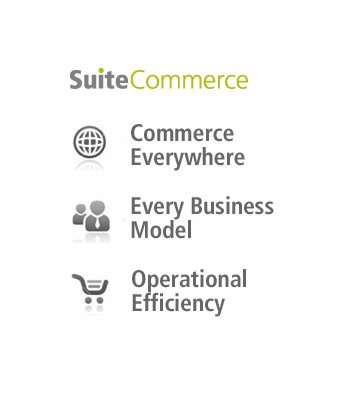
The Pros
- It’s not all bad news. For starters, SuiteCommerce is the optimal solution for business owners who are already utilizing the other NetSuite software packages, including NetSuite ERP, CRM, and Business Intelligence. SuiteCommerce actually integrates fluidly with these powerful platforms, granting you instant point-and-click access to every operational aspect of your business. When used as a standalone service, however, the limitations of SuiteCommerce become more apparent.
- SuiteCommerce provides a multifaceted experience, enabling you to manage multiple web stores from a single interface. This is perhaps the biggest advantage to the standalone user. Let’s say, for instance, that your automotive corporation manages three separate online stores: one specializing in aftermarket body accessories, one specializing in engine parts, and one specializing in gauges. With SuiteCommerce, you can manage all of these stores with a single account. Many leading e-commerce providers don’t offer such freedom and flexibility.
The Cons
- For the casual user, SuiteCommerce is just about the most complicated e-commerce platform you’ll ever encounter. Non-tech-savvy business owners typically find themselves overwhelmed by the multifaceted menus and superfluous processes involved in building even the most basic online storefronts.
- On a practical level, SuiteCommerce misses the mark in terms of user experience. Things that ought to be automated simply are not. Take SEO for instance. If you want your site to rank highly in major search engines, you need to take matters into your own hands and fine tune every aspect of your SEO experience — from the robots.txt file to the sitemaps to the URL structure, right down to the internal linking patterns. In other words, NetSuite forces you to do manually what many of its competitors handle automatically.
- The high pricetag is a huge setback. Considering how much SuiteCommerce falls short of its comparably equipped competitors, I find it surprising that this platform charges about 25% more per month.
The Verdict
If you’re already a NetSuite customer who is familiar and comfortable with the layout of these programs, SuiteCommerce will make an excellent addition to your existing collection of business programs. To everyone else, run for the hills!
Rating: 3 out of 5.
VirtueMart
VirtueMart is a free, open-source e-commerce solution for users of the Joomla Content Management System. Think of it like this: VirtueMart is to Joomla what WooCommerce is to WordPress. On the surface this may sound like a sweet deal for Joomla enthusiasts, but VirtueMart is not without its downsides. In fact, a quick search of the phrase “VirtueMart reviews” will present you with a laundry list of frustrated, dissatisfied customers. That’s why I consistently urge my clients away from VirtueMart in favor of a more versatile, all-inclusive shopping-cart platform.
The Pros
- The platform integrates flawlessly with Joomla. This is great news for the millions of Joomla enthusiasts out there who have struggled to find an e-commerce solution that works within the confines of their beloved CMS. Joomla developers will feel right at home with the freedoms afforded by this versatile plugin, while everyone else will simply be left scratching their heads in confusion.
- VirtueMart allows users to create an unlimited amount of categories and products, and has some really neat features for coupons and discount codes. As a result, this platform is surprisingly one of the better free options in terms of conversion optimization, even if there is quite a bit of work involved in setting up these features.
The Cons
- I’ve said it before, and I’ll say it again: “Free” is never free in the world of e-commerce. Yes, you’ll find the word “free” plastered all over the VirtueMart website, but when you add up all of the actual costs, you’ll realize that you might as well just invest in an all-inclusive platform like Bigcommerce or Shopify. You’ll still need to invest in a payment gateway, a hosting provider, and your own security. Additionally, if you’re not a seasoned Joomla developer, you’ll need to hire an expert designer and developer to work for you, which leads me to my next point…
VirtueMart is not at all user-friendly. If you’re looking for ease of use, look elsewhere, because VirtueMart is designed to cater to the most passionate coders and Joomla aficionados out there. There are no simple point-and-click website builds here, only an endless sea of forms, codes, and functions.
- If you’ll forgive my candor, the free themes simply suck. Simplistic, amateur, highly limited in selection. Even their own website looks like it was designed in 1998 (see screenshot to the left). That’s usually a very bad sign. If you’re looking to build a professional business website, you have three options: 1) Design your own theme. 2) Invest in a premium template (adding to your investment even further. 3) Find another e-commerce platform.
The Verdict
If you eat, breathe, and live Joomla, VirtueMart may be a dream come true (assuming you understand the actual costs involved). For everyone else, steer clear.
Rating: 2.5 out of 5.
osCommerce
osCommerce is one of the earliest PHP-based platforms still hanging on, but this dwindling shopping cart is living proof that age does not always equate to wisdom. In fact, osCommerce is one of the most needlessly frustrating e-commerce providers you’ll ever encounter — as many of its customers will attest to. It’s surprising me to me that osCommerce has failed to evolve into a powerhouse solution, as it has been the inspiration for so many other popular, open-source platforms, including Magento and Zen Cart.
The Pros
- Despite the dated and somewhat clunky nature of the platform, osCommerce has one of the largest libraries of add-ons that you’ll find with any shopping cart provider. So if you’re willing to spend a little time customizing your store, there is almost nothing you can’t accomplish. From custom design tweaks to social media buttons to conversion optimization tools, osCommerce has an extension for just about everything.
- Customer support is available for about $65 per year. That’s just over $5 a month. Yes, it means that your “free” service isn’t really free (but we already knew that), but it’s a very small price to pay for having an expert available to answer all of your questions and guide you through the process of building and maintaining your store. Not all open-source solutions offer such a service. There is also an active forum where you can have your questions answered free of charge.
The Cons
- Like so many free and open-source platforms, osCommerce is sorely lacking in the user-friendliness department. While installation is a breeze, the actual setup process can be an absolute nightmare for users not intimately familiar with HTML, CSS, PHP, MySQL, and JQuery.
- osCommerce has some of the weakest security in the business. In 2011, millions of osCommerce users were attacked by hackers over the course of a single week, and users continue to report high levels of vulnerability.
- Everything about osCommerce just feels extremely dated. The designs are really nice — if you’re living in 2003, and the back-end functions feel like something straight out of a 1990s web-building application. This platform has tremendous potential given its long history, but it feels like the osCommerce team dropped the ball a very long time ago.
The Verdict
osCommerce is another “yeah it’s free, but you get what you pay for” e-commerce solution. But unlike NetSuite and VirtueMart, which integrate nicely with other programs, osCommerce is like its very own deserted island, with very little in the way of saving grace. You’re probably going to want to skip this one.
Rating: 1.5 out of 5.
Zen Cart
I’ll admit there are certain web development circles in which Zen Cart is hailed as a god among open-source shopping cart solutions. But as someone who has worked with this needlessly convoluted platform for years, I just don’t get it. Zen Cart is by far the most dated, cluttered, and inefficient of all the open-source solutions I’ve worked with. The most unforgivable sin committed by Zen Cart is the fact that it complicates things that need not be complicated. The main navigation alone features 11 primary categories and hundreds of sub-categories, and it can take hours to locate simple functions like product options and shipping regions. I’ve been working with the platform long enough to basically know my way around the overly complex interface, but casual users will surely find themselves banging their head against their laptop.
The Pros
- If I am to give the devil his due, I will say that Zen Cart is almost infinitely customizable — assuming that you understand PHP like a native language. For development gurus who demand absolute control over their websites and content management systems, Zen Cart certainly affords you the freedom to customize according to your wildest dreams.
The Cons
- What haven’t we already covered? The front end is a convoluted mess of archaic menus and hierarchies, the default skin is hideous and outdated, customer support is limited to the wisdom of the Zen Cart user community (which isn’t itself a terrible thing, but it is extremely limiting if you need someone to walk you through the process of creating a product page), and you’ll still have to pay for your own hosting, payment gateways, and probably web development.
The Verdict
If you worship at the altar of PHP and are a tireless customization junkie, you may want to give Zen Cart a try. For everyone else, the platform makes absolutely no sense as a practical shopping cart solution. Avoid this one like the plague!
Rating: 1 out of 5.
Coalition Technologies Works with Every Major E-Commerce Platform
Maybe you’re still trying to figure out which shopping cart solution is right for you, or maybe you’re struggling to get the most from your existing platform. If you’re painstakingly trying to build your online business, or are toiling away in a futile effort to generate greater traffic and revenue, we can help. I have personally worked with leading Fortune 500 companies and forward-thinking startups alike, employing my years of development and SEO expertise to help these companies multiply their revenue many times over. For businesses that sell online, it all starts with an in-depth understanding of how to get the most from your chosen e-commerce platform. It’s not just about listing products on a website. It’s about:
- Optimal keyword usage. Are you targeting the right keywords? It’s not as simple as you think. It’s about striking the right balance between popularity and competition.
- Targeted content creation. It’s not enough to describe your products. Your content must be unique, engaging, keyword optimized, and assembled in such a way that makes consumers eager to buy.
- Conversion optimization. This is the ability to turn visits into sales. Content creation is part of it, but there’s a lot more to it than that. The placement of banners, the phrasing used in calls-to-action, the organization of content…and that’s just the beginning.
- Search engine optimization (SEO). From metadata to sitemaps to microformats, the technical aspects of SEO are far too often overlooked, but are absolutely critical to generating the rankings necessary to remain competitive.
- Design. The aesthetics of your online storefront will have a tremendous impact on customers’ impression of your business, and that will make or break your sales volume. That’s why it’s usually a bad idea to rely solely on stock themes from your e-commerce platform.
- Development. How well does your site actually function? Is it easy for users to navigate? Are 404 errors rampant? Is your slow site speed negatively affecting your bounce rate? Even the best shopping cart platforms can leave you with a broken website if you don’t know what you’re doing.
I could go on and on about why it’s not enough to simply invest in a top-tier e-commerce platform, but you get the basic idea. You can buy the best guitar in the world, but if you don’t know your scales inside and out, you’re never going to sound like Zeppelin. The same principle applies here, and that’s why I always recommend hiring an expert to help you get the most from your shopping cart.
I have been working with these platforms for nearly a decade, helping businesses to maximize their revenue by expertly modifying every minute aspect of Bigcommerce, Shopify, Magento, and all of the major providers, but along the way I realized that if I truly wanted to take these businesses to the next level, I couldn’t do it alone. That’s why I started Coalition Technologies.
My goal was to assemble a team of the most experienced and talented designers, developers, marketers and SEOs in the business, ensuring that every one of my clients would be unstoppable. Today, we’re Southern California’s top design, development, and SEO firm, with a 99% client satisfaction rate and a portfolio that’s in a class by itself. No matter what platform you’re considering (or already using), my team has probably mastered every aspect of it.
Take Your Business to the Next Level
If you’re looking to truly get the most out of your e-commerce experience, I invite you to give Coalition Technologies a call today at (310) 827-3890. Your consultation is completely free, and you’re under no obligation to sign up for our services. We’ll help you to find the right platform for you (e.g., what are the pros and cons of BigCommerce VS Shopify), and set you up with a roadmap for success. Just let us show you exactly how we can boost your traffic and revenue to new heights, and discover for yourself why Coalition Technologies is the #1 name in online marketing and web development.

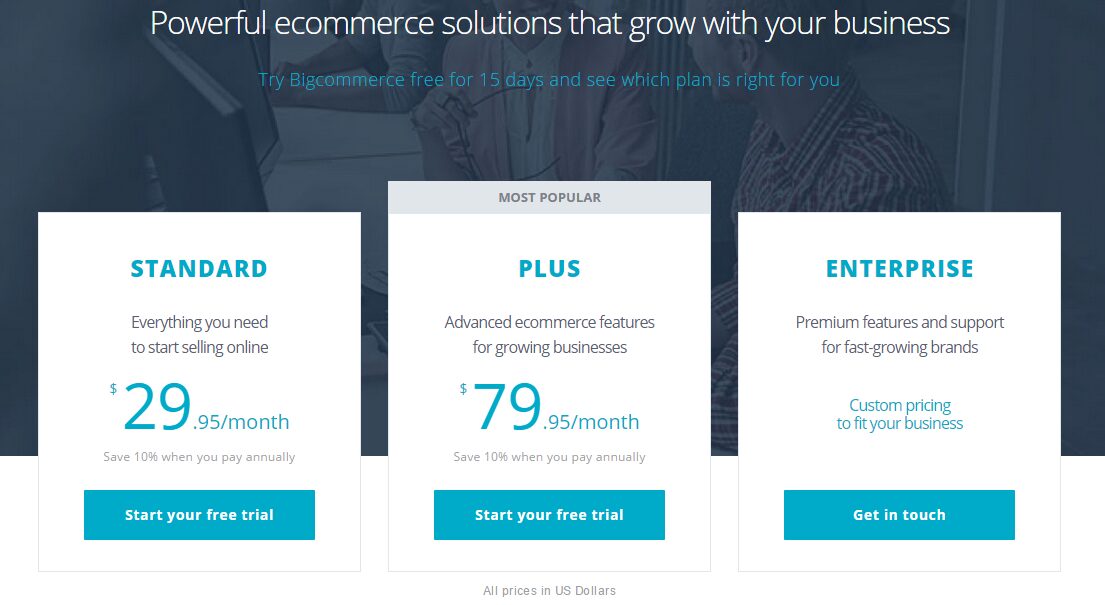



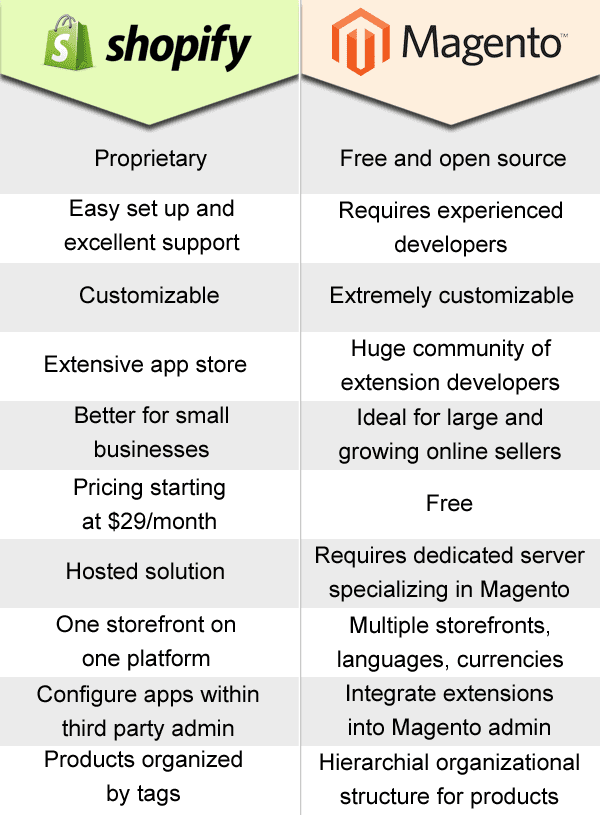
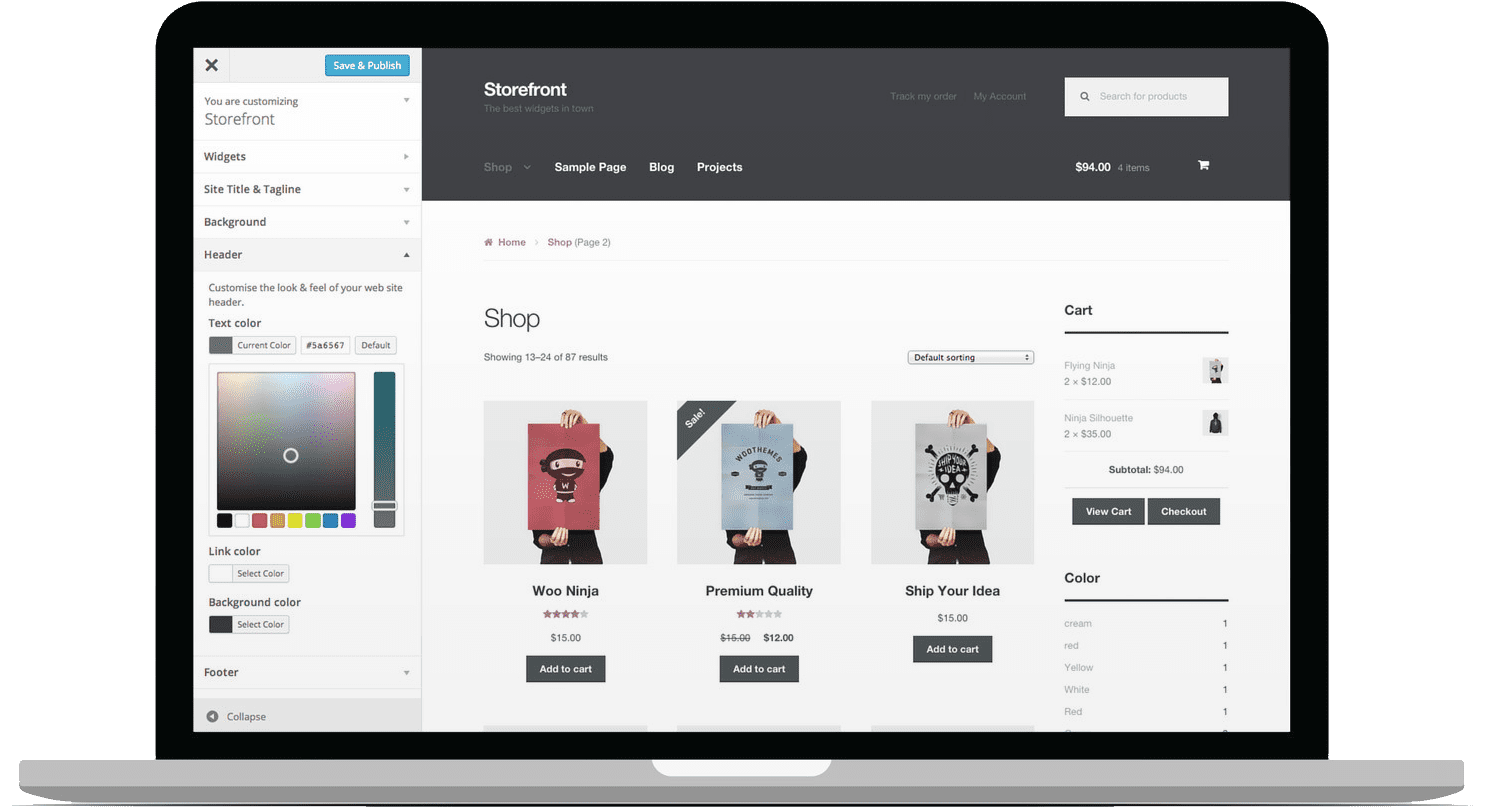
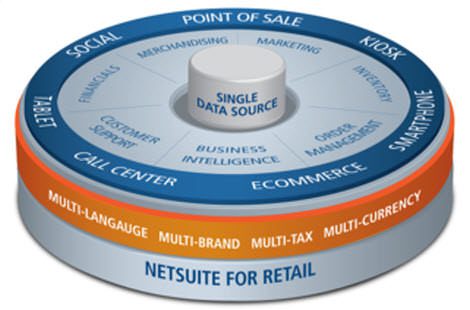
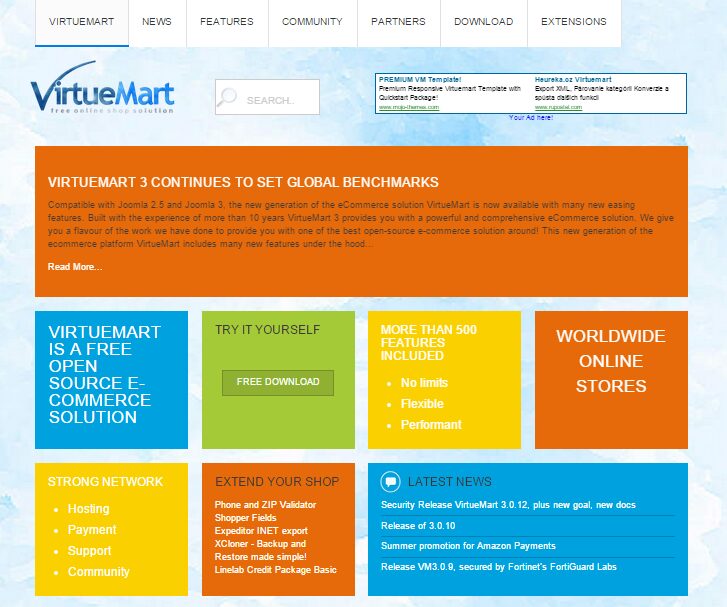 VirtueMart is not at all user-friendly. If you’re looking for ease of use, look elsewhere, because VirtueMart is designed to cater to the most passionate coders and Joomla aficionados out there. There are no simple point-and-click website builds here, only an endless sea of forms, codes, and functions.
VirtueMart is not at all user-friendly. If you’re looking for ease of use, look elsewhere, because VirtueMart is designed to cater to the most passionate coders and Joomla aficionados out there. There are no simple point-and-click website builds here, only an endless sea of forms, codes, and functions.


